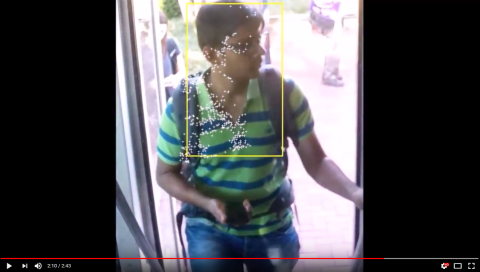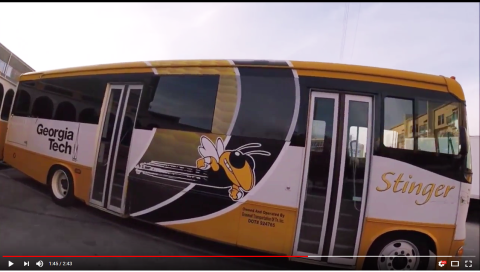The popular ECE 6258 Digital Image Processing class introduces graduate students to the field of image and video processing, in addition to new advancements in related fields such as machine learning and computer vision.
The popular ECE 6258 Digital Image Processing class introduces graduate students to the field of image and video processing, in addition to new advancements in related fields such as machine learning and computer vision. Taught by Ghassan AlRegib, a professor in the School of Electrical and Computer Engineering, and supported by Graduate Teaching Assistants Motaz Alfarraj and Yuting Hu, it is one of the largest classes offered in the School. Each fall, more than 100 students enroll, including students from the GT Lorraine and GT Shenzhen campuses.
Professor AlRegib focuses on a combination of in-class learning and hands-on experience. Each student participates in a semester-long class project with a team of peers. This vital component allows students to use what they learn in class to solve daily-life problems. In the fall of 2017, there were a total of 53 teams and projects in the class that covered different topics and research areas, including biomedical image processing, material science, geophysics and seismic signal processing, natural language processing, intelligent transportation, and many others.
Past student projects took on a variety of societal problems and include a system for brain tumor identification and characterization, a vehicle value estimator system, an algorithm to quantify the growth of semiconductor nanopillars, a Ping-Pong referee using image processing, and an app that functions as a virtual personal trainer.
One team made up of Anush Ananthakumar, Shubhankar Borse, and Madhuri Phute utilized the concepts they learned in class to design and implement a system for counting passengers entering and exiting Georgia Tech Stinger buses, a process that is currently done manually by drivers. The students installed cameras in a Georgia Tech Stinger bus to automatically collect data on the movement of passengers, thereby saving the driver time and allowing for less distractions. The system was a success with an accuracy of more than 95%.
Each team put together short videos to describe their projects. A sample of the videos and project posters can be found at Professor AlRegib’s website.
Additional Images

